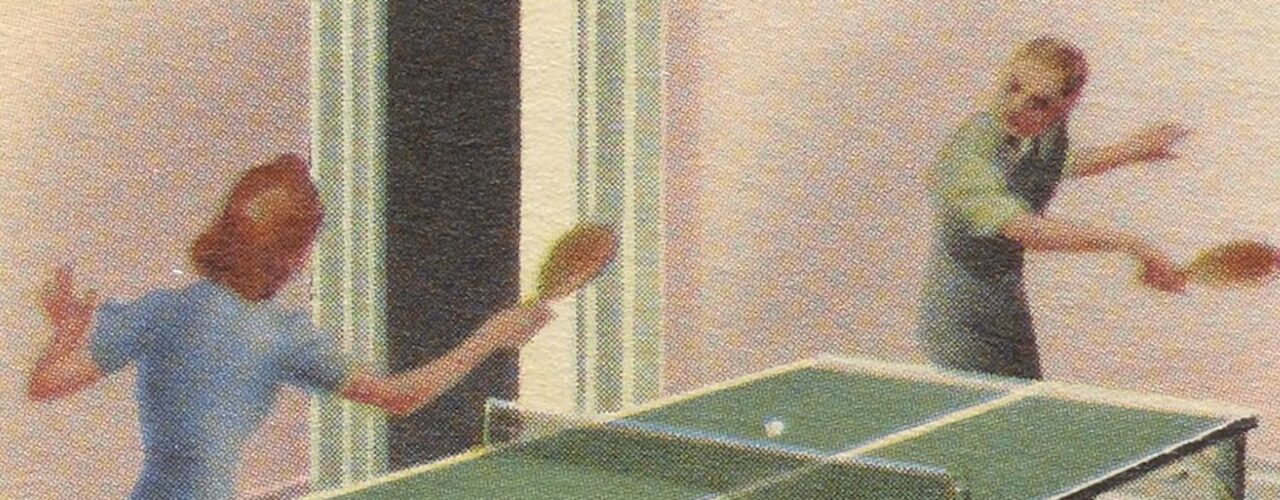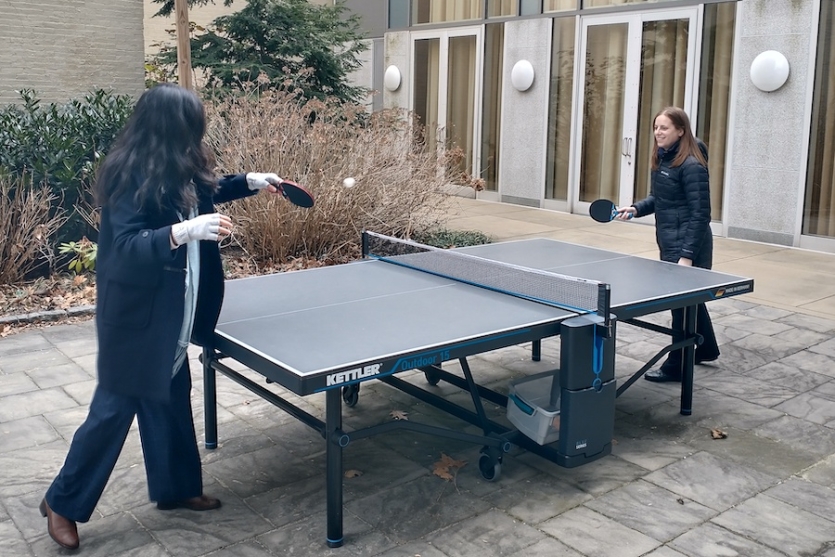Periodic Table Tennis
On scientists with a passion for Ping-Pong.

On scientists with a passion for Ping-Pong.
That’s the sound I heard coming from the Science History Institute’s digital collections recently. Don’t worry—the audio interface wasn’t broken! I was just listening to oral history interviews with scientists who shared their love of table tennis. I invite you to jump into an exploration of the game and its possible role in the lives of (future) scientists as we mark World Table Tennis Day this week.
But first, a note about my work. As a program associate in the Institute’s Center for Oral History, I am adding metadata in the form of a digital table of contents and synced audio and transcripts to some of the oral history interviews in our digital collections, making the interviews easier to browse and search. My work is part of the Oral Histories of Immigration and Innovation project, which highlights the experiences and contributions of scientists who immigrated to the United States in the 20th century.
While listening to an interview with Shi Huang, a scientist who researches cancer genetics and epigenetics, I was surprised to learn he considered a career as a professional Ping-Pong player when he was young. That fact alone wasn’t shocking, although it is impressive that scientists such as Huang are so multitalented. What most surprised me was the fact that I had heard a similar aspiration just a few months earlier.
George Rosenkranz, whose discoveries at Mexican pharmaceutical firm Syntex S.A. led to the development of the oral contraceptive pill, also considered becoming a professional Ping-Pong player. Born and raised in Hungary, his scientific path took him to Cuba, Mexico, and the United States (as museum and library head Michelle DiMeo discusses in her blog post, “The Power of a Teacher”). Rosenkranz shares in his oral history interview that he was a junior table tennis champion in Hungary, a talent that served him well when he needed to support himself as a student in Switzerland.
Shi Huang’s love of table tennis, on the other hand, was fostered during his childhood in China. In addition to being an avid, talented Ping-Pong player, Huang was also an artist, another career path he considered. He explains in his interview that growing up during the Cultural Revolution in the 1960s and 1970s meant that academic study was not emphasized in his early education.
During the Cultural Revolution, intellectuals were persecuted, many secondary schools and universities were closed, and the educational institutions that remained open did not provide rigorous academic training. In this atmosphere, Huang could focus on his Ping-Pong skills. He would wake early in the morning to run, in part to train for table tennis competitions.
Huang and Rosenkranz aren’t the only scientists who share a passion for table tennis; a search of our oral history collection reveals numerous Ping-Pong enthusiasts.
Leslie L. Vadász, like Rosenkranz, grew up in Hungary. He says the sport was popular when he was young, and he even skipped school from time to time to play. Who knew that one of the future leaders of Intel occasionally played hooky—and Ping-Pong? Other scientists describe Ping-Pong as a hobby that kept them active and connected them with family, friends, and colleagues.Whether living in China, Hungary, or in the United States, I found it interesting to learn how scientists have connected to Ping-Pong and at times even considered it as a possible career path. Clearly, the path to becoming a scientist is not always straightforward, and the interests of scientists often extend beyond their labs (as my colleague Rachel Lane described in her recent post on scientists who found inspiration in the natural world).

Science History Institute staff aren’t immune to the thrill of Ping-Pong, either! You can sometimes find us enjoying the Institute’s very own Ping-Pong table, although I don’t think any of us are planning to go pro.
George Rosenkranz, Shi Huang, and Leslie L. Vadász’s interviews are part of the Oral Histories of Immigration and Innovation project, which is generously sponsored by the National Historical Publications and Records Commission.
Featured image: Detail of Parlon: New Paint Ingredient…Improves Many Finishes, Hercules Powder Company advertisement, 1940. Science History Institute.
Unwrapping the mystery of a Styrofoam Santa in our collections.
New World ingredients in Old World dyes.
How a Jewish scientist’s intellectual property became a lifeline in his journey from Nazi Europe to the United States.
Copy the above HTML to republish this content. We have formatted the material to follow our guidelines, which include our credit requirements. Please review our full list of guidelines for more information. By republishing this content, you agree to our republication requirements.